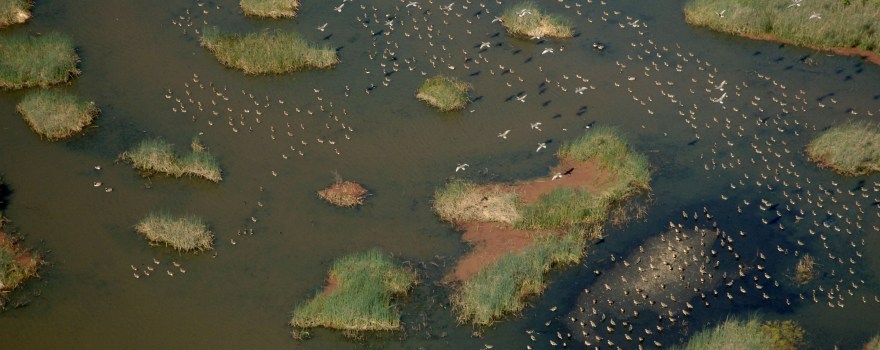From the USGS:
California’s Central Valley provides critical habitat for migratory waterbirds, yet only 10% of naturally occurring wetlands remain. Competition for limited water supplies and climate change will impact the long-term viability of these intensively managed habitats.
Objectives: Forecast the distribution, abundance, and connectivity of surface water and managed wetland habitats, using 5 spatially explicit (270 m2) climate/land use/water prioritization scenarios. Mapping potential future dynamic flooded habitat used by waterbirds and other wetland-dependent wildlife to inform management decisions.
Methods: We integrated a climate-driven hydrologic water use model with a spatially explicit land change model, to examine stakeholder-driven scenarios of future land change, climate, and water use and their impacts on future habitat availability.
Read more and access the article at the USGS by clicking here.



